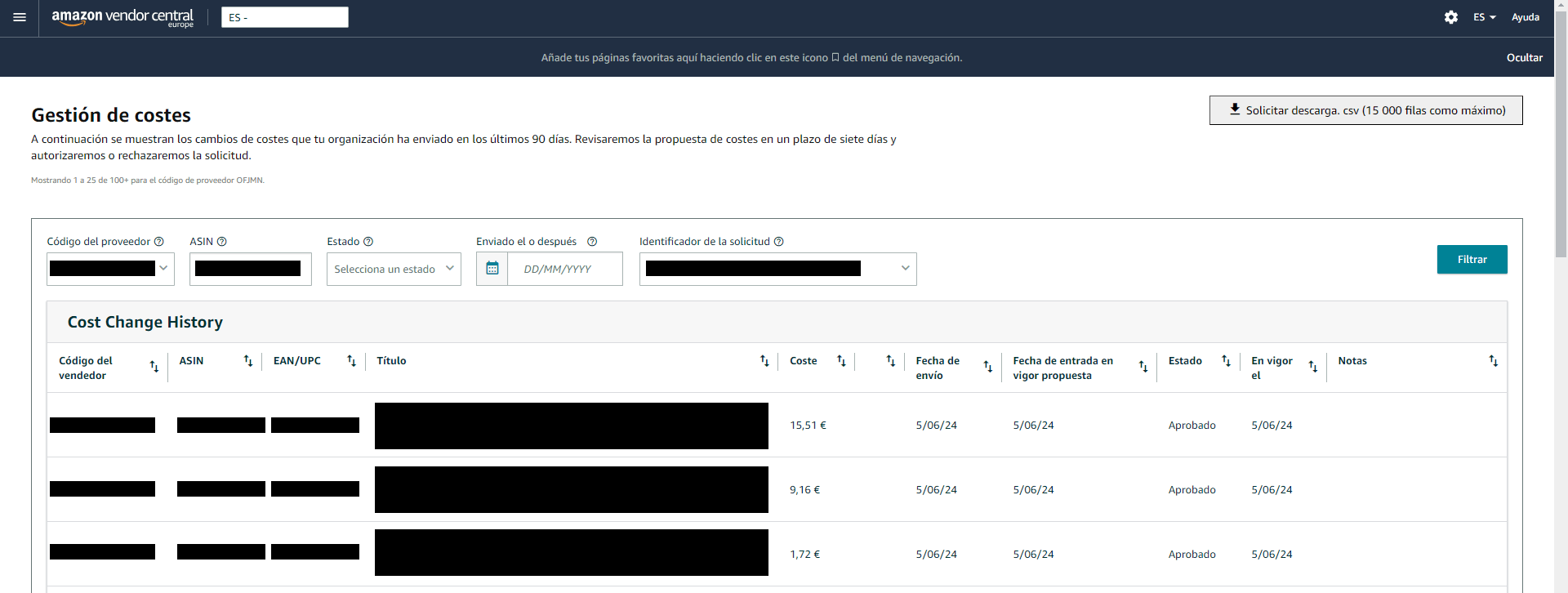Negotiating the Cost Price Increases (ICC) or cost price increases with your Amazon Retail manager is usually a complicated task due to the strip and loosen of interest between both parties. This negotiation process is essential for you to improve your margins as vendor. You may think that Amazon will simply transfer the increase in cost to the final customer as it usually happens in the Marketplace , but, the reality is another. Amazon follows the lowest prices on the market with its repricer ( as we tell you in the article on CRAP ), which makes it difficult to maintain margins when the costs increase.
Remember that Amazon Retail reserves the right to match or improve the lowest price you find in the market, so it is very important that you have those very well negotiated costs .
In this article I explain the steps to increase the possibilities of approved your cost price increases. Eye, it is not infallible, much less. But you will have more numbers to succeed, yes.
Index
Step 1: groups cost price increases
Price negotiations with any retailer can be long and complicated, and Amazon is no exception.
Amazon suppliers managers use sophisticated tactics to delay or reject request for cost change. Therefore, it is best to make a single request for as many products as possible .
In addition, link these ICC to your negotiations/mails during joint business planning (JBP or Joint Business Planning), since Amazon will probably not accept cost changes outside these annual periods . That is what usually happens. Do not frustrate. It is nothing personal and works like this.

Step 2: Upload the new cost prices to Central Vendor
The next step is to load your new cost prices for all articles in Central Vendor . The fact that your application is rejected within a few hours or days of doing it should not be surprising. This is because, as I have commented in the previous point, the Amazon system tends to reject many cost increases automatically .
However, your manager vendor can cancel the system and manually approve cost changes . So, perform this step to avoid delays in negotiations.
Step 3: Inform your Venger Manager
It is time to inform your manager about cost changes. Send an email detailing the specific changes for each item and includes the average CPI increase in %, cost of cost change and effective cost change. That does not mean that the OK will give you, no matter how much you justify the climb. For example, the price of your main raw material may have increased by 30% and that is reflected by a 30% cost increase, but Amazon will not give you the OK automatically.
You should keep in mind that the cost change must be the product of a sustained increase in your own cost structures and not a temporary fluctuation . The reasons that Amazon accept are increases in shipping costs, increased prices of raw materials and variations in change rates.

Step 4: Negotiate margins and dates
The manager vendor will try to reject the cost increase, since he is concerned about the possible decrease in the margin of his account. For this reason, it will be essential here to use a data -based approach to support your CPI application.
It shows that the margin of your account will not be significantly affected by the change of cost. You can do this showing increases in MSRP/RRP aligned with the CPI , indicating that the increases are for permanent reasons) and not temporary, and showing that other retailers have already accepted the increase.
Having a price tracking historical software is essential to teach the evolution of those prices within Amazon. With Fredda , from Azzgency, you can get that information.
Step 5: Take advantage of your alternatives
In case Amazon does not accept your cost changes (which is most likely) , the shipments of the affected items are immediately detained until they are accepted . Depending on your negotiation power, this could make your suppliers manager reconsider your decision.
If you do not get a positive response after two weeks, consider the FBA/3P strategy , that is, create a 3P account and sell directly to Amazon customers. Although this requires that you and your team learn new skills, it will make you less dependent on the acceptance of CPI by Amazon in the future.
Conclusions
While increasing Amazon cost prices is not a simple task, following the steps of this guide you will have more possibilities that your manager vendor approves it. It is always good to have a plan B in the form of other acquisition channels in the bedroom. One can be a Amazon Seller account, but it can also be to sell in other marketplaces such as Miravia, Tiktok Shop, Shein or in your own online store.
The process of increased vendor costs is one of the most complicated and long ones you will have to deal with. Do not despair, because it will take your time to get a positive response. In Azzgency, they can help you prepare those negotiations prior to the increase in costs. Do not hesitate to contact them .

